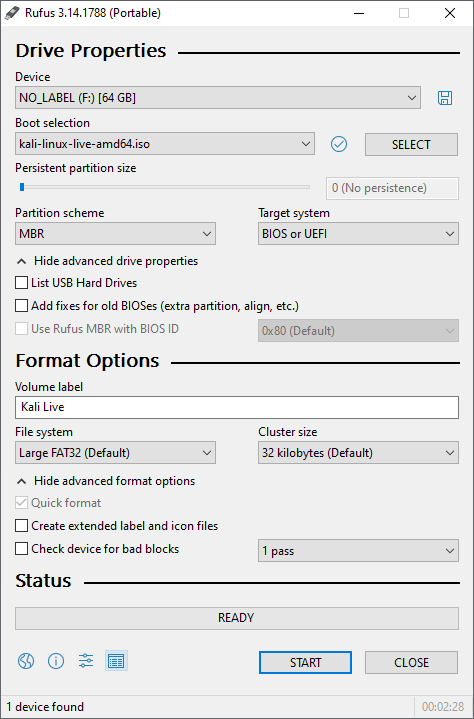

Therefore we install kali on a live USB with or without persistent and encrypted data. All of us want to be anonymous when we use kali linux.Since modifying the boot menu is a non-trivial task, the Kali live image includes two menu entries by default that enable persistence: Live USB Persistence and Live USB Encrypted Persistence, as shown in Figure 9.1, "Persistence Menu Entries".

One of the markings of the 1.0.7 Kali release was the introduction of Kali Live USB LUKS encrypted persistent storage, on which we further elaborated in one of our previous blog posts.However, we're not done yet with USB persistent storage as more features in Kali remain to be explored.Restart the Mac Hold down the Option key when you hear the chime Select EFI as the startup disk Select Live system (encrypted persistence) Create a new persistent encrypted partition. There's only one step left to go, and that's to set up the persistence configuration file. This will be the encrypted volume where all of our persistence data will reside on our persistent Kali USB device. We now have an encrypted luks volume that's password protected, formatted as ext3, and labeled persistence.
Kali linux usb persistence on windows how to#
There is an excellent guide on how to set in up in the official Kali Linux documentation: Kali Linux Live USB Persistence.

If you want encrypted persistence, refer to Adding Persistence to a Kali Linux "Live" USB Drive. you have a 32GB USB and download a 3GB kali live image, then you should leave 3-4GB for boot and anthor part for your kali live persistence. We will explore features such as persistence, creating LUKS encrypted persistence stores, and even dabble in “LUKS Nuking” our USB drive. In this workshop, we will examine the various features available to us when booting Kali Linux from USB devices. Not only will this prevent your main system from crashing but also allows you to have a portable Kali Linux system that you can plug into any computer and boot from the USB to have it up and. It is advised to use a 'Live' installation, preferably on a USB stick when it comes to Kali Linux.


 0 kommentar(er)
0 kommentar(er)
